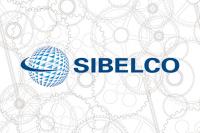The use of nepheline in the production of matt glazes

By Vincenzo Torre, Sibelco (Antwerp, Belgium)
Matt glazes give tiles a wonderfully natural look and open up endless design possibilities. But creating a matt glaze that is also functional in terms of ease of cleaning and resistance to scratching and chemicals can be very challenging. In addition, the trend towards large format tiles means that manufacturers need to minimise glaze-related pinhole defects in order to reduce costly volumes of fired waste.
Spectrum® nepheline syenite
Drawn from Sibelco’s deposits in Norway, Spectrum® nepheline syenite enhances the aesthetic and functional characteristics of matt glazes in a number of ways, as well as helping to reduce production costs.
In comparison to other nepheline products, Spectrum’s higher alumina content improves scratch resistance. It also means that the glaze formula needs smaller quantities of expensive calcined alumina and less clay and kaolin, too much of which can adversely affect glaze slip rheology and aesthetic surface appearance.
When used in place of feldspar, Spectrum® reduces the melting temperature of the glaze (thanks to high levels of sodium and potassium), thereby helping to reduce overall energy consumption. Spectrum® also has a higher coefficient of thermal expansion (CoE) than a standard sodium feldspar (fig. 1), making the glaze CoE more compatible with the CoE of the tile body to improve the body-engobe-glaze fit.
In terms of firing temperatures, SpectrumÒ nepheline syenite is extremely stable up to 1070°C while sintering and softening points are close to the firing temperature for glazed vitrified tiles.
Colour development, matt level and whiteness
Free of magnesia and with a barium oxide content of 0.4, laboratory tests conducted by Sibelco show that Spectrum® enhances digital ink colour development while delivering a good level of matt glaze surface. In this respect Spectrum® outperformed other nepheline products in the tests, which either delivered good colour development but a lower matt, or a higher matt but lower colour development. The tests also showed that glazed vitrified tiles with a glaze made with Spectrum® are easier to clean than those made with other nepheline products.
When whiteness matters, Spectrum® again outperforms alternative nepheline products, thanks to low levels of iron oxide and titanium dioxide (0.21%). And because of the purity of the Sibelco deposit in Norway, Spectrum® has a higher nepheline content than alternative products and contains no free quartz.
Highest consistency to increase yield
Thanks to the outstanding dimensions of Sibelco’s nepheline syenite deposit and its consolidated processing expertise, Spectrum® has excellent characteristics of consistency and quality.
Spectrum® helps to significantly reduce problems with pinholes, thereby reducing scrap waste after firing. This is especially important when glazing very large slabs (such as 1.5 x 3 metres).
Sibelco’s nepheline syenite deposit is situated in the north of Norway, close to the Alta Fjord in the Arctic Circle, and guarantees a reserve of over 80 years. Today Spectrum® is exported to customers around the world for use in a wide range of applications including ceramics, coatings and plastics.
Did you find this article useful?
Join the CWW community to receive the most important news from the global ceramic industry every two weeks




















